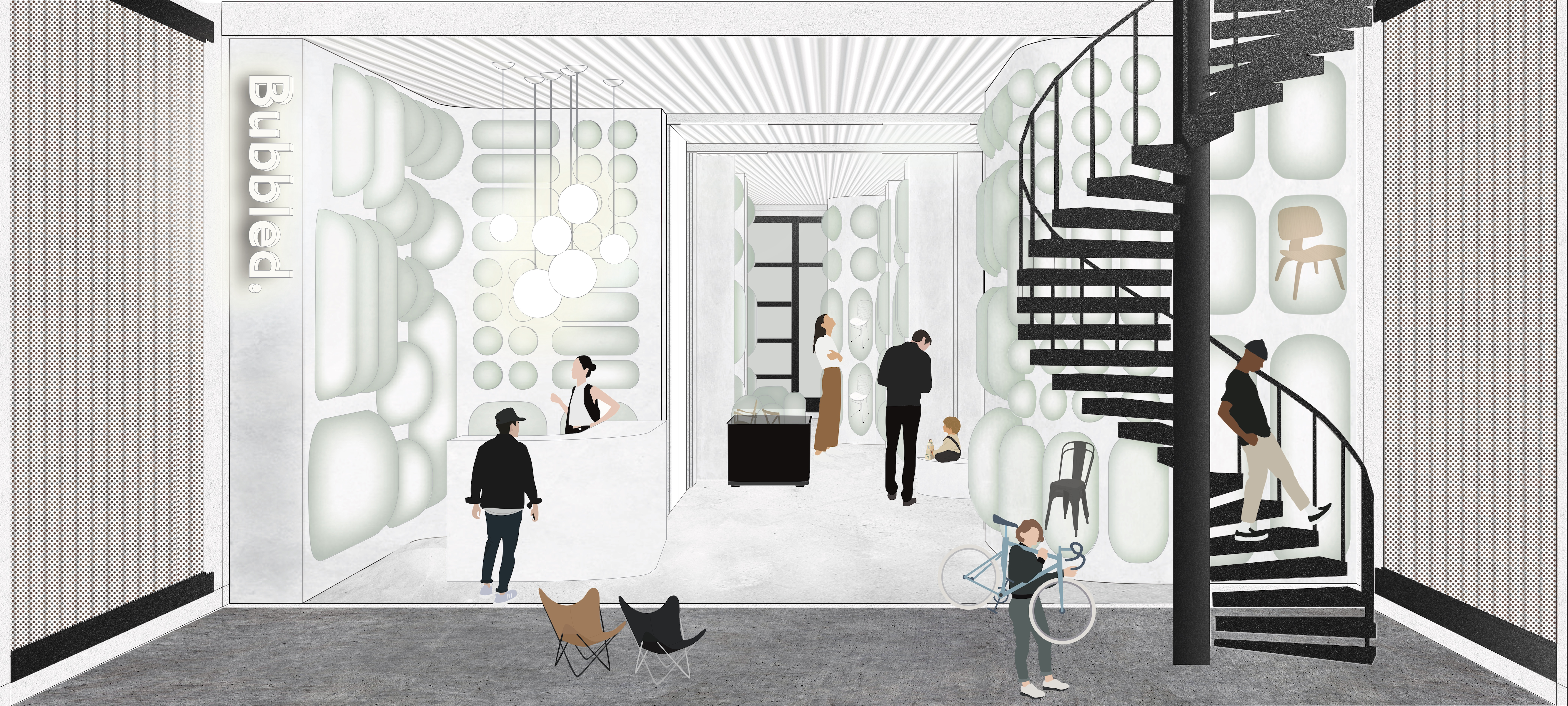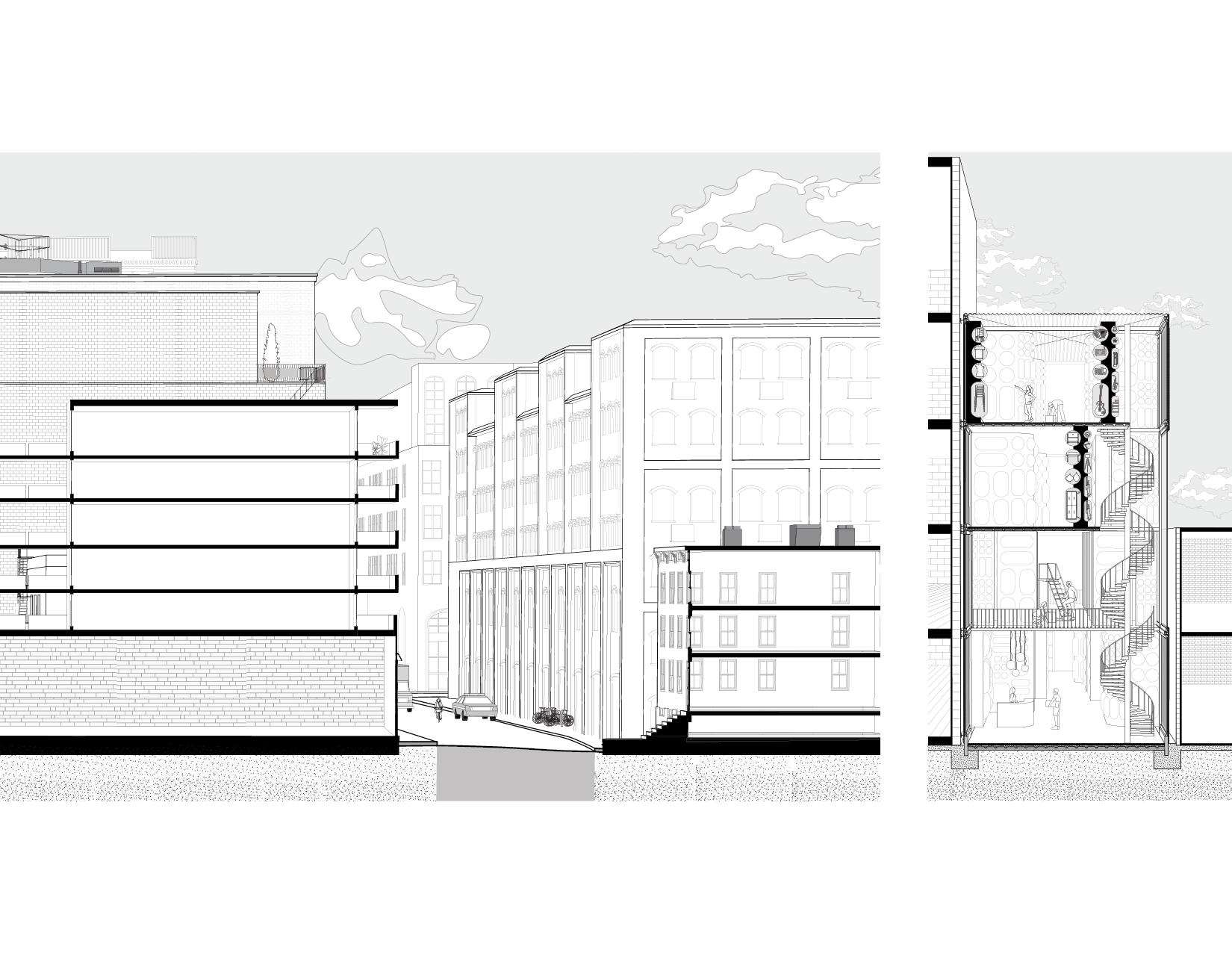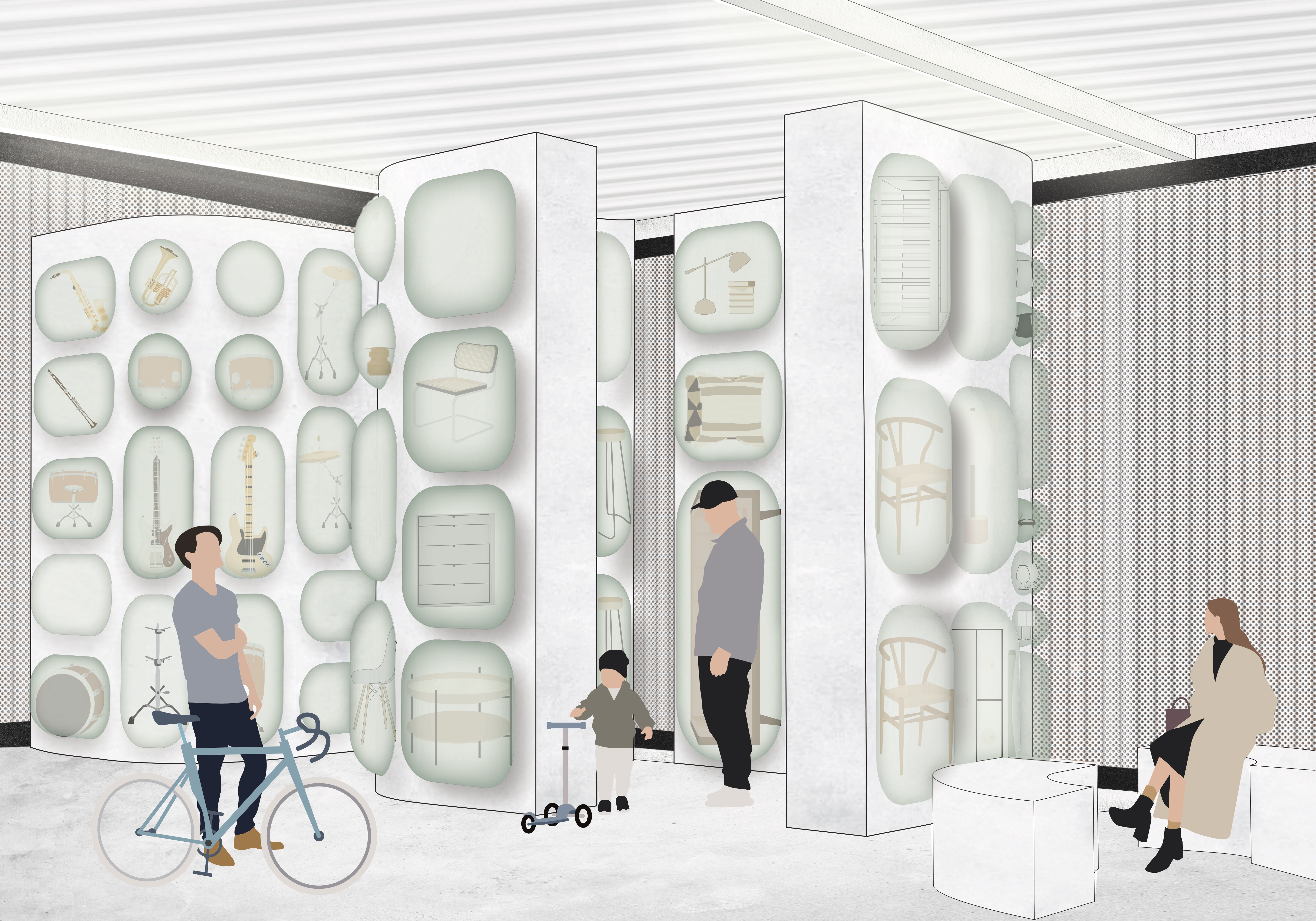This project critically re-imagines today’s storage infrastructure and self-storage architecture in Brooklyn, New York. By considering both cultural and spatial dimensions of storage and how architecture relates to its content, this project aims to question whether the ad hoc storage systems that colonize the cities formulate sharing infrastructure or threaten neighborhood communities? Do these emerging, albeit standardized industries present evidence of alternative spaces or new types of architecture? What are the new relations and configurations of space that can reconcile domesticity and seclusion?
BUBBLED BELONGINGS
Rethinking Self Storage Systems
Architecture + Infrastructure
Brooklyn, NY
Rethinking Self Storage Systems
Architecture + Infrastructure
Brooklyn, NY


Space has become a luxury and many people are renting self storage units resulting in a growing industry reliant on massive structures infiltrating the infrastructure and context of our towns and cities. Most of the time these buildings are where many people’s belongings go to disappear. People forget about what they have in storage and this leads to an unsustainable increase in unnecessary consumption.
Visibility, Transparency, and Accessibility are key themes in this design with a larger goal of reducing consumption and encouraging engagement, sharing, trading, and transactional interactions between the users. The design is easily deployable and scalable making it suitable for dense urban areas, and can be executed as a simple infill, rooftop addition, or ADU. The structure is a steel frame and glazing facade system wrapped in a perforated metal cladding. The steel frame structure gains additional shear support by connecting to a neighboring building.
The facade uses Low-E solar control glazing that reduces heat penetration with UV rejection window film. The perforated cladding adds additional privacy while maintaining a certain level of transparency and visibility. The storage walls are prefabricated modules that can be combined in many ways making the system highly adaptable to the space. The prefabricated walls also function as the interior structural system. Made from reinforced concrete, the walls support the load of the floor plates above. People’s belongings are then secured in transparent lightweight Teflon-based polymer called ethylene tetrafluoroethylene or ETFE. The ETFE bubble is then inserted into the prefabricated wall.
With people’s belongings being stored in this manner we hope to encourage more conscientious keeping. This manner of storage offers a practical and didactic exploration of infrastructure and architecture.
With people’s belongings being stored in this manner we hope to encourage more conscientious keeping. This manner of storage offers a practical and didactic exploration of infrastructure and architecture.





